Choosing the correct bowl size for your dog or cat is crucial for promoting healthy eating habits and proper...
Wet vs. Dry Pet Food: Which is Better for Your Pet?
Choosing the right type of food for your pet is one of the most important decisions a pet owner can make. Whether you have a dog or a cat, understanding the benefits and drawbacks of wet and dry pet food can help you determine which option is best for your furry friend. Additionally, using the right raised dog feeder, slow feeder bowl, or other dog feeders can enhance mealtime and contribute to your pet's overall well-being. In this guide, we’ll compare wet and dry pet food, highlighting their pros and cons to help you make an informed choice.
Understanding Wet Pet Food
Wet food, often sold in cans, pouches, or trays, is a popular choice among pet owners due to its rich flavor and high moisture content. It typically contains a higher percentage of protein and fat compared to dry food, making it a great option for pets with specific dietary needs.
Benefits of Wet Pet Food
1. Hydration Boost:
Wet food contains about 70-80% moisture, which helps keep your pet hydrated. This is especially beneficial for cats that tend to drink less water than they need.
2. Palatability and Taste:
Most pets prefer the taste of wet food due to its rich aroma and texture. Picky eaters often find wet food more appealing.
3. Easier to Chew and Digest:
Wet food is easier for older pets or those with dental problems to chew and digest. It’s also a good option for pets recovering from surgery or illness.
4. Higher Protein Content:
Wet food typically has a higher protein content, which can be beneficial for pets that need extra protein in their diet, such as active dogs or growing puppies.
Drawbacks of Wet Pet Food
1. Shorter Shelf Life:
Once opened, wet food spoils quickly and needs to be refrigerated and used within 1-2 days.
2. Higher Cost:
Wet food is more expensive than dry food, making it less practical for multi-pet households or large dogs that consume a lot of food.
3. Messy and Inconvenient:
Serving wet food can be messier than dry food, and it often requires more cleanup.
Understanding Dry Pet Food
Dry pet food, also known as kibble, is a popular choice for its convenience and affordability. It contains a lower moisture content, usually around 10%, and is often fortified with essential vitamins and minerals.
Benefits of Dry Pet Food
1. Convenience and Longer Shelf Life:
Dry food can be stored for longer periods without refrigeration, making it easier for busy pet owners to manage.
2. Cost-Effective:
Dry food is more economical, especially for large dogs or multi-pet households.
3. Dental Health Benefits:
Chewing kibble helps reduce plaque and tartar buildup, promoting better dental health. Using a slow feeder bowl can further encourage slow, deliberate chewing.
4. Easy to Portion and Store:
Kibble is easy to measure, making it simpler to control portion sizes and maintain a healthy weight for your pet.
Drawbacks of Dry Pet Food
1. Lower Moisture Content:
Dry food provides less moisture, which can lead to dehydration, especially in cats. Consider using a raised dog feeder to encourage better posture and digestion.
2. Less Palatable:
Some pets, especially picky eaters, may not find dry food as appealing as wet food.
3. May Contribute to Weight Gain:
Free-feeding kibble without portion control can lead to overeating and obesity. Using dog feeders with portion control features can help manage this.
Wet vs. Dry Food: Which is Better for Your Pet?
Nutritional Comparison
Both wet and dry food can provide complete and balanced nutrition if they meet AAFCO (Association of American Feed Control Officials) standards. However, the choice between the two depends on your pet’s individual needs.
• Wet Food: Higher in protein and moisture, making it ideal for pets with higher hydration needs or those requiring a richer diet.
• Dry Food: Lower in moisture but easier to store and portion, making it a practical choice for long-term feeding.
Health Considerations
1. Hydration Needs:
Cats are prone to urinary tract issues, making wet food a better option to ensure adequate hydration. For dogs, dry food combined with regular access to water can suffice. An automatic water dispenser alongside dry food can further support hydration.
2. Dental Health:
Kibble’s texture can help clean teeth, reducing plaque and tartar buildup. Using a slow feeder bowl with dry food can slow down eating, further promoting better oral health.
3. Weight Management:
Wet food has fewer carbohydrates and more protein, which can help manage weight. However, dry food, when portioned correctly using dog feeders, can also prevent weight gain.
Combining Wet and Dry Food
For many pets, a combination of wet and dry food provides the best of both worlds. This approach can offer the hydration benefits of wet food while maintaining the dental benefits and convenience of dry kibble.
Tips for Mixing Wet and Dry Food
• Balance Portions: Ensure the combined portions meet your pet’s daily caloric needs.
• Introduce Gradually: Slowly mix wet and dry food to prevent digestive upset.
• Use a Slow Feeder Bowl: When combining wet and dry food, a slow feeder bowl helps regulate your pet’s eating speed, preventing bloating and overeating.
How Feeding Tools Impact Mealtime
The type of feeder you use can significantly affect how your pet eats and digests their food.
1. Raised Dog Feeder
A raised dog feeder elevates the food and water bowls, allowing your pet to eat in a more natural position. This is especially beneficial for large breeds and older dogs with arthritis or joint issues.
Benefits of a Raised Dog Feeder:
• Reduces strain on the neck and joints.
• Promotes better digestion by allowing gravity to aid in the swallowing process.
• Helps prevent bloat in larger breeds.
2. Slow Feeder Bowl
A slow feeder bowl is designed to prevent dogs from eating too quickly, reducing the risk of bloat, choking, and indigestion.
Benefits of a Slow Feeder Bowl:
• Slows down eating, preventing gulping and choking.
• Promotes healthy digestion and prevents overeating.
• Adds mental stimulation during mealtime.
3. Dog Feeders with Portion Control
For pet owners who prefer to leave food out, automatic dog feeders with portion control settings can help manage your pet’s diet.
Benefits of Portion Control Feeders:
• Prevents overeating and obesity.
• Ensures consistent meal sizes.
• Ideal for pet owners with busy schedules.
Common Mistakes to Avoid
1. Overfeeding Wet Food: Wet food is calorie-dense, and overfeeding can lead to weight gain.
2. Neglecting Water with Dry Food: Ensure your pet has access to fresh water, especially if feeding primarily dry food.
3. Ignoring Portion Control: Free-feeding, especially dry food, can lead to obesity. Using portion-controlled dog feeders helps maintain a healthy weight.
Conclusion
Both wet and dry food offer unique benefits, and the choice ultimately depends on your pet’s needs and preferences. Using the right feeding tools, such as a raised dog feeder, a slow feeder bowl, or other dog feeders, can enhance mealtime and support your pet’s overall health. Whether you choose wet, dry, or a combination of both, paying attention to portion control, hydration, and dental care will help ensure your pet stays happy and healthy.
Making informed decisions about your pet’s diet and feeding routine can lead to a longer, healthier life. Take the time to observe your pet’s preferences and adjust accordingly to meet their unique needs.
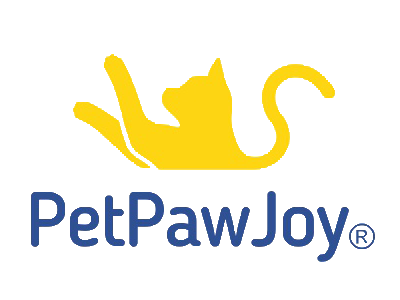


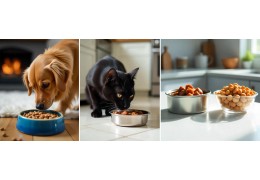
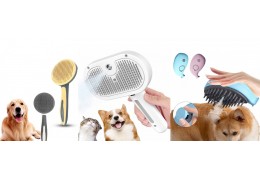
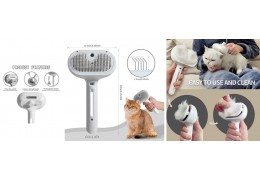
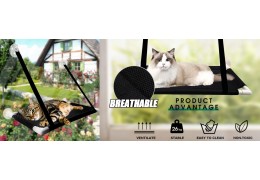
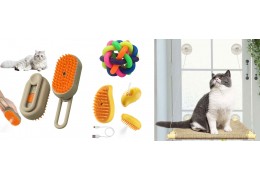
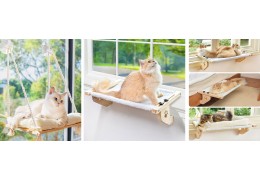

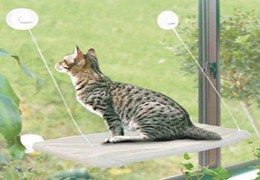


Top authors